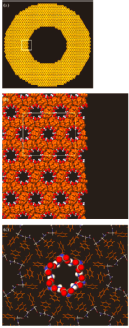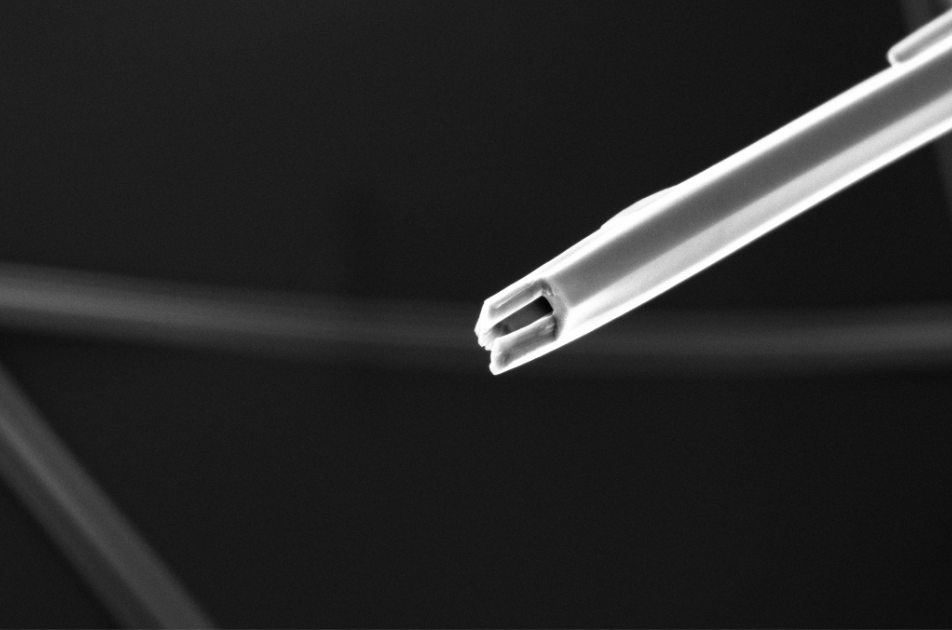Self-assembling Diphenylalanine Peptide Nanofibres
The diphenylalanine (FF) motif has been found to be important in fibre formation in vivo. For example the amyloid beta (Aβ) polypeptide, which is associated with Alzheimer's disease, contains FF and forms fibres in the brain. As such, it is important to understand the assembly mechanism so that it can be prevented.
Gazit et al. have shown that the diphenylalanine dipeptide self-assembles to form hollow fibres with a very high aspect ratio in water. The structure of these fibres is shown below (Figure 1).

Figure 1. C.H. Görbitz, ChemComm, 22, 2332-2334 (2006)
These fibres also have many unique and useful properties. They have a Young's modulus of 19 GPa making them one of the stiffest biological materials known. They have shown piezoelectric activity and have been used to cast metal nanowires. However, their assembly mechanism is still unclear which means that it is hard to control the formation of these fibres.
The aim of my project is to investigate the self-assembly mechanism of the FF fibres at the molecular level, by using a variety of techniques including molecular dynamics simulations, linear dichroism and scanning electron microscopy.
References
Kol, M.; Adler-Abramovich, L.; Barlam, D.; Shneck, R.Z.; Gazit, E.; Ruosso, I. Nano Lett 2005, 5, 1343-1346
Reches, M.; Gazit, E.; Science 2003, 300, 625-627

Diphenylalanine

A diphenylalanine peptide nanofibre
This work is supervised by Giovanni Costantini, Alison Rodger, Mark Rodger and Matt Hicks.
